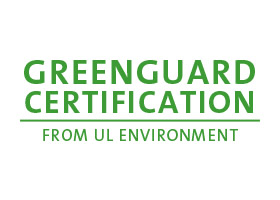Essential requirements
The products must be suitable for construction works which (as a whole and in their separate part s) are fit for their intended use, account being taken of economy, and in this connection satisfy the following essential requirements where the works are subject to regulations containing such requirements. Such requirements must, subject to normal maintenance, be satisfied for an economically reasonable working life. The requirements generally concern actions which are foreseeable.
1
Mechanical resistance and stability
The construction works must be designed and built in such a way that the loadings that are liable to act on it during its constructions and use will not lead to any of the following:
- collapse of the whole or part of the work;
- major deformations to an inadmissible degree;
- damage to other parts of the works or to fittings or installed equipment as are result of major deformation of the load-bearing construction;
- damage by an event to an extent disproportionate to the original cause
2
Safety in case of fire
The construction works must be designed and built in such a way that in the event of an outbreak of fire:
- the load-bearing capacity of the construction can be assumed for a specific period of time,
- the generation and spread of fire and smoke within the works are limited.
- the spread of the fire to neighbouring construction works is limited,
- occupants can leave the works or be rescued by other means.
- the safety of rescue teams is taken into consideration
3
Hygiene, health and the environment
The construction work, must be designed and built in such a way that it will not be a threat to the hygiene or health of the occupants or neighbours, in particular as a result of any of the following: the giving-off of toxic gas, the presence of dangerous particles or gases in the air, the emission of dangerous radiation, pollution or poisoning of the water or soil, faulty elimination of waste water (smoke, solid or liquid wastes), the presence of damp in parts of the works or on surfaces within the works.
4
Safety in use
The construction work must be designed and built in such a way that it does not present unacceptable risks of accidents in service or in operation such as slipping, falling, collision, burns, electrocution, injury from explosion.
5
Protection against noise
The construction works must be designed and built in such a way that noise perceived by the occupants or people nearby is kept crown to a level that will not threaten their health and will allow them to sleep, rest and work in satisfactory conditions.
6
Energy economy and heat retention
The construction works and its heating, cooling and ventilation installations must be designed and built in such a way that the amount of energy required in use shall be low, having regard to the climatic conditions of the location and the occupants.
From a Document of the European Commission
Engineered stone products
In the composition of stone agglomerations, two types of inerts are more widely used:
quartz based inerts and marble based inerts
Classification of the agglomerated stone products technical characteristics according to the different use
| USE | Specific Gravity | Water absorption | Flexural strength | Abrasion resistance | Surface hardness | Thermal expansion | Chemical resistance | Freez and taw resistance |
|---|---|---|---|---|---|---|---|---|
| Floors | C | B | B | A | B | C | B | C |
| Raised Floors | B | B | A | A | B | / | B | C |
| Internal coverings | C | / | / | / | / | / | / | C |
| External cooverings | C | C | A | / | C | B | B | A |
| Bath Tops | B | A | B | A | A | / | B | / |
| Kitchen Tops | B | A | B | A | A | / | A | / |
| Cut to size product | B | C | B | B | B | C | B | C |
/: Not influential charatteristic
C: Poor significant characteristic
B: Facultative charasteristic to be evaluated according to the use time by time
A: Important characteristic
The inert type is chosen according to the required performance
Resistance to acid:
Quartz based aggregates are more appropriate as the silica of which they are composed exhibits a high resistance to acid attacks as opposed to marble that is easily attacked.
Resistance to humidity:
As the marble is slightly soluble in acidic waters (presence of CO2), the quartz based inerters are also more appropriate in this case.
Resistance to wear:
The products composed by silica aggregates are very resistant to abrasion.
Resistance to fire:
The most subject to heat is in this case the resin which, while being addicted, has a low resistance.
However, in the composite the percentage of resin is modest and this gives auto-extinguishing characteristics after the melting and deterioration of the superficial layer.
| RESISTANCE TO | WINE | COLA | LEMON | DETERGENT | OIL | COFFEE | HCL 10% | KOH 10% |
|---|---|---|---|---|---|---|---|---|
| Quartz-resin |
Certifications
European norms for ENGINEERED STONES
- EN 14617-1 “Agglomerated stone – Test methods – Determination of apparent density and water absorption”
- EN 14617-2 “Agglomerated stone – Test methods – Determination of flexural strength (bending)”
- EN 14617-4 “Agglomerated stone – Test methods – Determination of the abrasion resistance”
- EN 14617-5 “Agglomerated stone – Test methods – Determination of freeze and thaw resistance”
- EN 14617-6 “Agglomerated stone – Test methods – Determination of thermal shock resistance”
- EN 14617-8 “Agglomerated stone – Test methods – Determination of resistance to fixxing (dowel hole)”
- EN 14617-9 “Agglomerated stone – Test methods – Determination of impact resistance”
- EN 14617-10 “Agglomerated stone – Test methods – Determination of chemical resistance”
- EN 14617-11 “Agglomerated stone – Test methods – Determination of linear thermal expansion coefficient”
- EN 14617-12 “Agglomerated stone – Test methods – Determination of dimensional stability”
- EN 14617-13 “Agglomerated stone – Test methods – Determination of electrical resistivity”
- EN 14617-15 “Agglomerated stone – Test methods – Determination of compressive strength”
- EN 14617-16 “Agglomerated stone – Test methods – Determination of dimensions and geometric characteristics”
- EN 14618 “Agglomerated stone – Terminology and Classification”
- EN 15285 “Agglomerated stone – Modular tiles for flooring and stairs (internal and external)”
- EN15286 “Agglomerated stone – Slabs and tiles for wall finishes (internal and external”
- EN 15388 “Agglomerated stone – Slabs and cut-to-size products for vanity and kitchen tops”
- prEN 16954 “Agglomerated stone — Slabs and cut-to-size products for flooring and stairs (internal and external)
Other Technical Advantage
Dimension & Weight: large -sized slabs are produced and then cut to size and finished as required with the possibility to lighten the weight of the structure by varying the thicknesses.
Resistance to chemical agents: very low porosity thanks to the resin that in addition to performing the binder function, has excellent properties of impermeability and resistance to acidic action.
Mechanical resistance: thanks to the technology of compaction by vibro compression under vacuum, the products have a very high resistance to flexibility and shock. It is known that flexural strength is a function of compression strength (for compressed fibers) and traction (for thick fibers), so having the artificial material with increased traction resistance thanks to the resin, it also has a greater flexural strength , compared to the natural material.
Long-term resistance against UV rays, frost and weather.


